Stephen Joyce tried to appeal to New Zealanders’ common sense in an opinion piece over the weekend:
It makes sense in a slowing economy to bring forward infrastructure investment to boost economic activity and protect jobs. You get the economic boost from the extra spend, plus something to show for it. If you build the right infrastructure it can in turn boost economic growth in the future.
Governments build things like hospitals, schools, prisons, electricity transmission lines, and new roads and railway tracks. New school buildings have already been going up at a fast rate for a while now.
For Joyce, unsurprisingly, the “big opportunity” is in new roads:
The big opportunity to lift infrastructure investment in New Zealand quickly is in transport; notably new roads.

To the National Party, new roads are a general panacea, being good medicine when the economy is growing, too.
We need more than “something to show for” our large transport investment. Boosting economic activity – whether with projects that are easy to get off the ground quickly, or with bigger projects to serve long-term infrastructure needs – must be in projects that have high value themselves. New roading and big highway projects may seem logical to Joyce, but they make little economic sense. The traffic they induce makes our carbon emissions, congestion and safety problems worse. It’s long been known that investment in public transport provides more jobs than investment in roads. We’ll need to continue improving and maintaining our roads, but new roads should be rarely considered, as driving imposes high costs to both the driver and to society:
Results suggest that each kilometer driven by car incurs an external cost of €0.11, while cycling and walking represent benefits of €0.18 and €0.37 per kilometer. Extrapolated to the total number of passenger kilometers driven, cycled or walked in the European Union, the cost of automobility is about €500 billion per year. Due to positive health effects, cycling is an external benefit worth €24 billion per year and walking €66 billion per year.
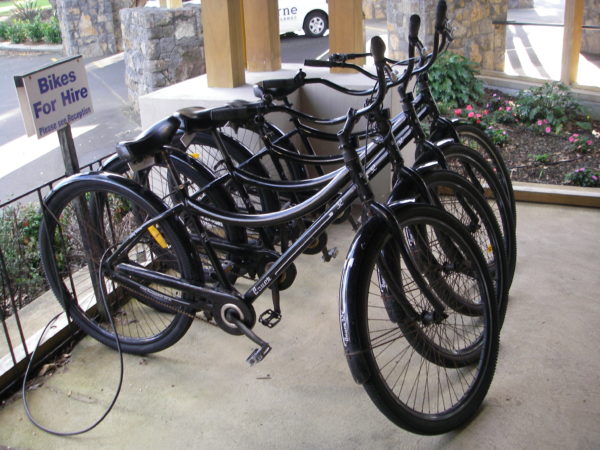
1. Easy-to-implement projects with shorter lead-in periods will provide fiscal stimulus if they have a high jobs / $ investment ratio.
Good quick-to-implement schemes are those that provide high levels of employment and that get money into the hands of the people who spend most of it on basic goods and services. Bad schemes are those that have lower employment rates and that get money into the hands of richer people who tend to invest in property, pushing prices up, or who take it overseas.
- In education, employing more teachers and support staff, and funding more maintenance projects. New schools, necessary in areas seeing big growth in rolls, are for long-term planning.
- In health, employing more people to provide primary health care out in the community. New hospitals and regional clinics are necessary, but they’re long-term projects.
- In waste, employing people to collect, repair, upcycle and compost resources at a local level. The big recycling and waste-to-energy plants are probably necessary, but rushing them will only produce poor, ill-conceived plans.
- In housing, employing people to fix, insulate and double-glaze NZ houses, to build the type of high-density housing we need, and providing training programmes to fill the capability gaps.
Returning to transport, fiscal stimulus could be provided by employing people to:
- Repair footpaths,
- Clear debris from cycle lanes,
- Install cycle parking in town centres, at bus stops and transport hubs,
- Do trials of low-traffic neighbourhoods,
- Enforce parking rules,
- Install lighting on footpaths,
- Extend regular maintenance programmes to include minor improvements,
- Implement small-scale safety projects,
- Convert petrol cars into electric cars,
- Control the lollypop signs at school crossings,
- Count people walking, cycling, scooting and using wheelchairs; transport analysis is lacking this crucial data,
- Compile data about regional bus services required to make good investment decisions for increasing multi-modal inclusive access in regional and rural areas,
- Improve driver training,
- Provide education about safety and urban planning,
- And much, much more.
There are plenty of schemes we could implement quickly, with real benefits. There is no need to press the button on any project with low value just to stimulate the economy.
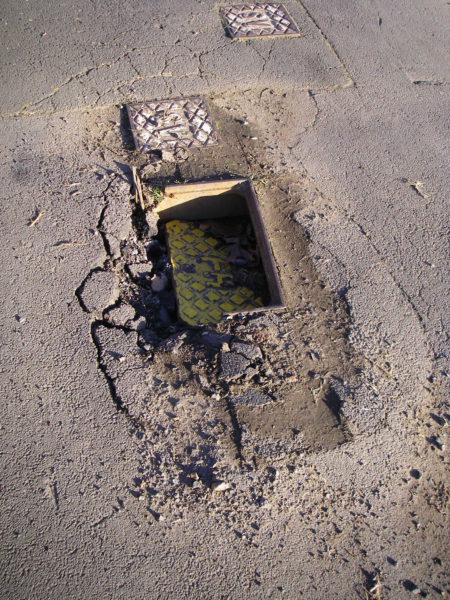
2. A call to push forward with new road projects is a call to continue creating problems
When National were in government, as Joyce points out, they did invest in roads:
A decade ago New Zealand, like everywhere, was struggling with the aftermath of the Global Financial Crisis. The government sped up rather than slowed down its infrastructure spend, despite plummeting tax revenues. Projects like the Coromandel’s Kopu Bridge, the Victoria Park tunnel in Auckland, and the Hawkes Bay Expressway extension were “shovel ready” and the go button was pushed. Then the big projects like Waterview, the Waikato Expressway, the Kapiti expressway, and the Christchurch motorway projects followed on.
The result, in terms of investment return, safety, and carbon emissions, doesn’t bear a repeat performance.
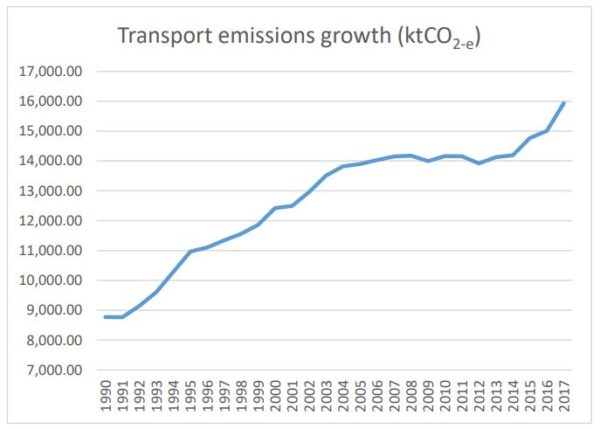
Our current government isn’t making the same mistake. It has a different focus, with goals for improving environmental, economic and social outcomes without sending increasing money overseas as revenues for the oil and car industry, and without saddling our children with huge maintenance bills they’ll be unable to pay in the future.
There was a big shift in the narrative of the latest Government Policy Statement. What we’re seeing in the NZTA disarray is not from a shift in budget, because that was only slight. Nor is it from a fear that transport funds are drying up – there is clearly more money available than ever before.
The problem goes much more deep.
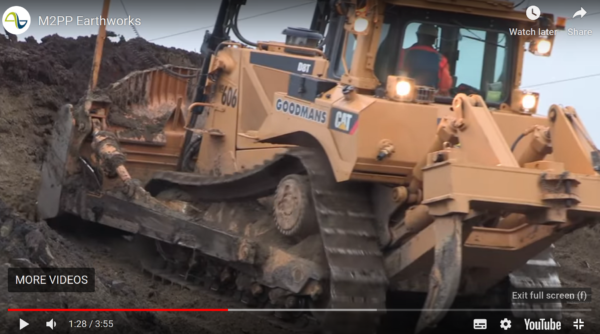
3. National may have been faced with ample “shovel ready” roading projects, but the current government has not been similarly favoured with “shovel ready” multi-modal projects.
From their inception, NZTA should have been a multi-modal transport agency, with a pipeline of ‘shovel ready’ projects of all modes, not just of big, expensive, uneconomic highways.
Public transport, road safety, cycling and smaller scale rural and local road improvement projects were all in the NZTA’s scope, and bringing forward these projects should have been an option when the new government took office. This would have kept the construction sector ticking along while the roading projects were re-scoped to spread the budget to improve the safety on more roads.
Instead of being multi-modal, as Jami-Lee Ross once said:
NZTA is the premier road-building agency in this country.
Rail, too, was ignored. What state of survival mentality did Kiwirail have to endure to mean it didn’t even have a few plans to pull from a drawer, read to roll, such as for electrification to Pukekohe?
Worse, we’re now nearly two years since the election. The National Land Transport Programme has more funding than ever before. We should by now have a transparent pipeline of projects lined up that meet the goals of new government.
It’s also five months since the CEO of AT wrote to NZTA describing the problems for trying to proceed with projects in the Auckland Transport Alignment Programme:
We are discovering a number of systemic issues encountered in the NZTA business case process which are threatening the delivery of the programmes and projects agreed by all parties to the ATAP, adding cost or creating delays.
Why has this still not been resolved? NZTA and the Ministry of Transport have had some damning reviews, but surely aren’t immune to all attempts at rehabilitation? They are supposed to be here to serve NZ, and provide 21st Century solutions to our transport challenges.
My theory is that are well-connected with the engineering consultancies and road construction companies, and they’ve been hearing fears from people who don’t have the skills for designing bus networks or building light rail, and who think providing active mode infrastructure is beneath them. There’s possibly fear amongst the themselves that they will need to reskill. However, transport funding is still huge; their jobs aren’t on the line. Adaptation is a natural and necessary response to our safety and climate crises.
From what I’ve been hearing, the fears that the long-term roading programme would diminish has led to a creativity in establishing ways to and in using the business case process to delay unpopular projects. In addition to the other cultural and organisation problems at NZTA (which are hopefully slowly being repaired), this creativity has undoubtedly contributed to the general disarray.
At a shallow glance, Joyce’s opinion may resonate with New Zealanders because there is a logic to providing a steady workload. But New Zealanders have suffered the safety, congestion and pollution consequences of National’s bias towards big road projects. The last thing we should do is take steps backwards. We can’t reward change-resistant public officials by prioritising their favoured high cost, low value projects while everything else is in disarray; it would delay their critical paradigm shift. Instead, we need them to solve their business case mess and cultural problems, and start releasing the multi-modal workflow.
The civil construction sector deserves this, as much as anyone, so they can can start growing their capability in projects that bring safety, sustainability and inclusive access to our urban and rural populations. Once our public service truly makes the shift, New Zealand’s transport sector will thrive, while improving our networks in a sustainable way.
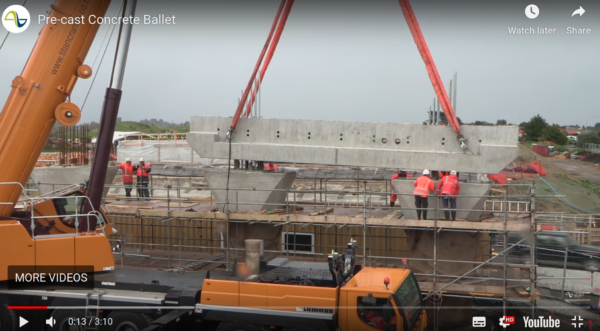

 Processing...
Processing...
So true. I don’t get this country’s obsession with business cases. Projects should have one business case tops, then hurry up and get on to consenting and NOR. The lack of progress over these past two years is exceptionally frustrating
Indeed. Projects underwent scrutiny before being included in ATAP and that should have been the end of it. They’re funded in ATAP as a first decade project? Good, build it now.
So true, especially since the announcement was made that they were going to build it. If the numbers, don’t stack up in the business case are they going to announce they have changed their minds? Looking at the infrastructure that we have built in this country in the past, it is sad we have fallen so low.
Also, what is the cost going to be when it finally gets started? It was $1.4 billion, then $3 billion, now $6 billion. At $1.4 billion it was already over twice the price per kilometre of an average light rail system.
One of the goals of the ministry work works was to even out supply and demand in civil construction and keep costs down. They also became a source of well trained apprentices for the private sector, reducing staff shortages. Maybe time to look at that again.
“…To the National Party, new roads are a general panacea…”
Having just driven to and from Ohakune this past weekend I think new roads are they were/are gigantic, tax payer funded election billboards for National. Visually the Waikato expressway and all the big road project look very impressive. Progress! You can see it!
Digging a tunnel under Auckland for commuters is not as impressive as 20km of 4 lane expressway right through an area full of marginal seats and SUV driving subbies and small business tytrants.
Hey don’t blame us in the civil construction sector. All the tier one contractors have rail construction experience, and building busways, cycle lanes and footpaths requires the exact same skills as building roads. The only thing the consultants and contractors care about is a predictable pipeline of work.
Building more roads isn’t any more beneficial for the civil construction sector than building other horizontal infrastructure. The more roads fan club are typically the trucking lobby and property developers hoping to unlock more land for sprawl.
It’s easy for Joyce to be critical by floating ideas that superficially sound good to the general public but don’t have to undergo robust scrutiny. The last projects of the RONS program had pretty dubious business cases (even ignoring the fact that induced traffic nullifies any travel time savings). Additional four-laning projects even further removed from urban areas wouldn’t pass the traditional project assessment process without political interference.
+1 The trucking lobby get to move a lot of material around in the building of a new road.
This is what I don’t get – it’s not like large-scale PT network rollout isn’t a huge civil engineering exercise either.
I mean look at light rail, be it street-level, separated or elevated. It’s still a huge project. It’s going to require the same kind of expertise and project management that massive roading projects require.
It bothers me hugely, as someone who is perhaps more sympathetic to National than Labour by default (I know, I know) that the criticism from National is all about what the proposed projects are, rather than the Government’s inability to deliver meaningful progress, regardless of what it was.
If it was about ‘the pipeline’ then it would be about why nothing is happening and why projects and business cases are languishing in a bureaucratic wasteland. But it’s not about that, it’s about the Nats thinking escalating congestion in West Auckland is fine because of a pathological hatred of light rail.
Politicians have always known that votes are available to purchase by offering tax/rate cuts and very visible local projects. To be effective this requires considerable advertising and promotional expenditure to “get the message across”
What the National Party and Stephen Joyce in particular has realised and exploits fully, is that it is considerably more cost effective to firstly offer large targeted sector spendups to encourage the recipients of the spending to donate to the party. Thus to secure the funding to enlarge the party promotional spending and so perpetuate the gravy train of those influential businesse’s dependency on even more government spending.
What lots of people don’t want to face is the fact that the roading lobby has contributed significant campaign donation funding to National over many years. When they were washing funds through the Waitemata Trust, one of the largest yearly donations was 200k from a collection of trucking and construction firms.
You can see why they would support National – they are past masters at shovelling taxpayers funds to those groups. Just look at their largesse in pushing shitty RoN’s, and the ludicrous decision by Gerry Brownlee to run Transmission Gully as a PPP when he acknowledged it would add around a third to the cost of the project.
And the road transport forum, or whatever it is called now, is run by Tony Friedlander, an ex Minister in the National Government
Good piece. I understand that some of the big engineering consultancies and civil contractors are getting very nervous. And so they should be.
But as others have said, good rail projects can still feed them good forward workload. The problem is that the government seems quite incompetent at moving forward PT projects. The lull is going to whack a few big consultancies hard.
While it is frustrating having such a glacial progress on light rail, maybe this is why LTNZ have been pitted against the Superfund etc.
Imagine the embarrassment to LTNZ “Leadership” if they start loosing control of all the big projects, to private firms.
I truly think that is beyond Twyford to be so manipulating.
Besides he is THE Minister of Transport and one would hope he has a little more control over the destiny of government policy than having to manipulate various government departments to progress anything!
I don’t disagree with anything you say but in politics perception is truth. And Stephen Joyce knows perception is huge!
If adding a lane here and a highway there can make my journey faster and safer than it’s got to be good surely? That it does not withstand much analysis is irrelevant because Joyce knows what lazy bastards Kiwi’s are when it comes to politics and he knows the depth of their thinking is not much beyond a pool of spit.
Enter this government. Somehow the Minister of Transport had no idea how mono-dimensional and road-oriented NZTA was, in fact how motorway obsessed it was. Anyone who has had anything to do with the roads knows how mint and how well maintained our motorways are. Never any expense spared by NZTA. But not poor old Phil.
You would have thought Twyford would have, in his privileged position in opposition, looked behind the scenes with what he was planning to see if it would fit with NZTA, wouldn’t you? You know, get a lie of the land, understand the department, the challenges you face. Basic stuff. But therein lies the big problem. If there were plans they were not well researched and I think at least some of the alternatives to roads policies by this government was made on the hoof at election time. And like a bunch of debutantes they blindly stumbled into this with no idea what to do next.
Perception is the truth. With the exception of empty announcements, Labour/Green alternatives don’t exist. Perception says light rail now more or less dead. Perception suggests no alternatives to roads on the horizon. Perception says nothing to show. Perceptions says however that roads are doable, however.
Perception is something this government and most especially our Transport Minister failed to grasp, even now! Hence the opportunities Joyce now exploits.
Some of the potential alternative projects listed can be advanced by central government (hospitals, housing) but many are within the orbit of local government (bus shelters, footpaths). Many local authorities argue that they are at or near their spending limits. Increasing rates, especially near local body elections, is not popular. It is much easier for central government to push money into big projects – whether they are good or bad ones.
Completely agree, Heidi. Great post. Gil Penalosa came over here to talk to Auckland Conversations back in 2016 and reiterated how the cycle network had to be completed and relatively quickly otherwise noone would be happy. And here we are. There are plenty of other projects too that could be completed that don’t involve road building. On a side note, I believe the bus shelters go back into council control (they have been leased to the advertising company) in 2022. It would be great to do an audit on them, work out which ones need improvement so as to be ready to go in 2022. Advertising rates are pretty high, it would be amazing if commercial advertising could pull in some extra funds for council. It would also be great if some of the advertising could be set aside for the local council and another portion for the community to hire at very low rates to spread the word about local events and important local information.
At its core the whole idea of fiscal stimulus is bullshit. It is based on the idea there is something called ‘aggregate demand’ and recessions occur because this declines so all you need to do is spend on shit and it will rise again thereby getting rid of a recession.
The simple maths of it is GDP = Consumption+Investment+Government spending +Net Exports (GDP=C+I+G+Nx). If GDP declines then increasing G is supposed to correct it. Problem is the total GDP is not the problem, the problem is that people are not consuming and businesses are not investing and increasing G just uses up available money to make that worse. It is called crowding out. And aggregate demand? That is just bollocks, a sum of what people are doing that can’t even be enumerated properly. They still teach aggregate supply and aggregate demand because it is easy to learn and that suits most economics courses.
Problem is FDR claimed to fix the great depression by spending so people believe this crap. Truth is the depression was caused by a sharp fall in the money supply (a share market crash and collapse of banks) and was fixed slowly as the money supply increased. Countries that abandoned the gold standard earlier recovered earlier.
Milton Friedman won his Nobel Prize (in part) because he showed the money supply decreased by a third during the Great Depression. It was that policy that turned the stock market correction to a depression that caused millions to suffer. The main culprit was, of course, the government who reduced money supply by balancing the budget and not easing interest rates. So I agree with your economic analysis, mostly.
However, what the government can do is invest in projects that will substantially increase GDP. Some of Heidi’s examples aren’t sustainable and will only cost us taxpayers more and more over the years. A new road into an area can stimulate economic development as new markets are introduced. The problem is when people go back to the well too many times. For roads we are mostly at that point.
Friedman won his prize for “consumption analysis and to monetary history and theory, including observations of the complexity of stabilization policy.” There is argument about exactly what the third bit meant but the first two parts are clear.
Ben Bernanke sets out the four monetary causes of the depression here https://www.bis.org/review/r040305e.pdf
As I see it people have the wrong idea about public spending and recessions. We should build roads and public transport systems during downturns simply because it is cheaper then than trying to do so during a boom. But they should only be built if the benefits exceed the costs.
I agree.
Now would be a good time for the country to borrow as we would get really cheap debt. However, the question as always is what we spend it on. Borrowing for operating costs is not a good idea.
How have the quoted examples of “Coromandel’s Kopu Bridge, the Victoria Park tunnel in Auckland, and the Hawkes Bay Expressway” and then the “big projects like Waterview, the Waikato Expressway, the Kapiti expressway, and the Christchurch motorway projects” lead to “New Zealanders suffering the safety, congestion and pollution consequences”. As you mention Joyce’s opinion piece does resonate with New Zealanders because they can see that these projects actually did lead to, improved safety and less congestion which actually results in lower pollution.
The current government will be voted out because not only have they stopped a number of projects, they actually have no skills or know how to get on with replacement projects like light rail. When it comes to making real life decisions they don’t trust their own judgement and defer to the consultants for another round of reports and consultation.
I’d say the Kopu bridge & Victoria Park tunnel were pretty good projects generally, not sure about the rest. In saying that the Kopu bridge change means a lot of the traffic queues at the one way bridge on busy weekends & holiday times in Tairua instead so partly ruining their local area.
But hang on – road safety got worse and congestion has also got worse during that period. All the reports so far say so. That is why Vision Zero has ben embraced.
So how can NZers “see that these projects actually did lead to, improved safety and less congestion which actually results in lower pollution”?
Labour’s downfall (if it happens) will be that our parliamentary term is too short. I. like many others, am frustrated with the rate of progress, particularly for transport projects, but a lot of the changes that Labour has made about how we think about policy can’t be translated into new action overnight. I don’t agree that the government is incompetent, I think that is the perception of the average New Zealander who thinks problems can be solved overnight. I think this may be why John Tamihere could upset Goff, even if most of what he says is ridiculous.
“I think that is the perception of the average New Zealander who thinks problems can be solved overnight”
I doubt that is helped by promising things within time frames that are entirely unreasonable and ultimately turn out to be deadlines you can’t meet. I think a lot of people are frustrated that policies like LRT were urgent when they were in opposition but are just muddling along with no real progress once they had to deliver them.
That is not the fault of ‘the average New Zealander’ – they only have themselves to blame for that.
Agree in general regarding urban projects. Implementing congestion tolls would also dampen urban roading demand and help the shift towards more urban multimodal projects.
However NZ rural state highways, in general, provide a very poor service level especially from a safety perspective. Every single one should at least have central and side wire rope guard railing, no priority junctions with right turns (apart from the jug handles that have been proposed for some rural SH schemes, but which still really arent that safe) and passing bays every 4km.
Some of our rural state highways have very low traffic volumes that would make it very hard to justify centre wire median barriers. Parts of SH43 for example have less the 200 vehicles per day.
Agreed, there will be some that may justify reduced interventions.
But is also comes down to what the minimum design standard should be for a SH.
Heidi, did you read or miss this in his column too:
“We could extend heavy rail to Auckland airport, or electrify it to Pukekohe, but it seems practical network extensions are currently out of fashion.”
Good post. Do countries overseas generally have multiple business cases like us?
Multiple? We just want one business case for the light rail! Perhaps it doesn’t stack up? Hence no business case.
There is a detailed one apparently the govt has in their hands just not public yet.
KiwiRail isn’t short on plans to pull from a drawer. They have a long list, including bypasses of Marton and the Turangarere Curve on the NIMT. But there has no change to their inability to proceed with such projects under the current government. All we’ve seen from the current government is projects that force inefficiency upon KiwiRail that do nothing to grow tonnage. The drawer remains closed.
Roads are for political vehicles, not actual ones with wheels. Public transport expands the unionised workforce. Travel modes other than driving tend to have the disconcerting effect of changing the insular suburban mindset that National depends on.
Growth is an illusion and depends on energy from fossil fuels and GDP growth has always been accompanied by a rise in oil consumption over the last century, but the net supply is not growing without a big increase in dept so we ramp up dept to put in more roads companies borrow money to buy more trucks and the banks lower interest rates to allow for this borrowing which then is a form of wealth destruction for the ones with savings and that is business as usual for the likes of Stephen Joyce.
The club of Rome put out the book Limits Of Growth in 1972 that business as usual was not sustainable on a finite planet and they were not talking about climate change in 1972 they were talking about energy use overpopulation and pollution all the things that go along with growth including degradation of soil and famine and we are progressing along the path they mapped out but now you can add climate change but any of the limits of growth can destroy our civilisation we need to change and quickly from the thinking of the likes of Stephen Joyce.
“Growth is an illusion and depends on energy from fossil fuels ”
Simply not true – look at all the C40 cities that are growing while reducing emissions.
C40 cities are still a work in progress on helping to slow climate change but they still need energy and a food supply and how many are there that are self-sufficient, the Club of Rome didn’t even consider climate change in it’s first assessment of the future problems we face, and c40 cities don’t fix any of the problems in an overpopulated world, as has been said before nature bats last so I stand by what I said growth is an illusion as it is set to fail.
Yes, we have to stop defining economic well-being by measures of growth. Growth is possible without increasing environmental load only by improving processes, a short-term fix, not something that can be sustained.
I can look back over 80 years and don’t see how people are better of then my parents or my life when in both cases one mans wage could bring up a family and buy a house, when I came to NZ in 1967 we rented for about 18 mths until we decided Nelson was the place to call home we had 100 pounds in the bank when and took out a mortgage on a house that would take 4 years of what I would earn as a field engineer for Burroughs maintaining accounting machines, so just an ordinary job that payed a average wage, how many people can bring up a family today on one wage and buy a house, my kids always had mum at home it was worth more than riches but not possible for families today which is very sad. We have had growth for 50 years but now people are worse of. GDP growth has been an illusion, just like building roads only makes thing worse.
John – how are C40 cities defined? It’s surprising to me that a metropolitan area like Sydney is reducing its emissions. It seems more likely that it would be the City of Sydney, which is basically the CBD and some of the surrounding suburbs. These densely packed areas are much more likely to be reducing emissions than the sprawling suburbs.
The variation in city boundaries around the world can have a significant impact on any comparisons.